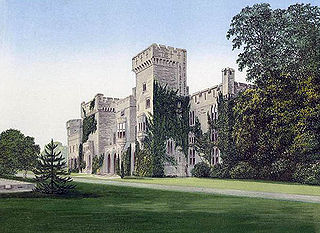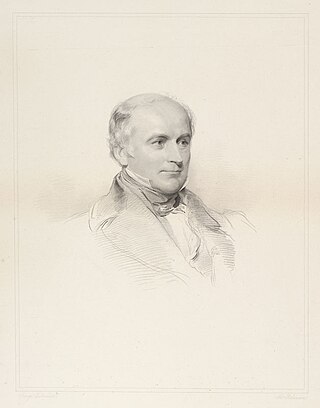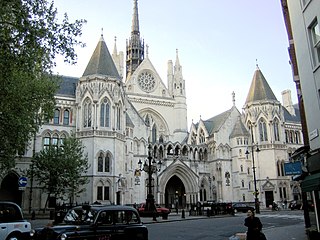Related Research Articles

Estate planning is the process of anticipating and arranging for the management and disposal of a person's estate during the person's life in preparation for a person's future incapacity or death. The planning includes the bequest of assets to heirs, loved ones, and/or charity, and may include minimizing gift, estate, and generation-skipping transfer taxes. Estate planning includes planning for incapacity, reducing or eliminating uncertainties over the administration of a probate, and maximizing the value of the estate by reducing taxes and other expenses. The ultimate goal of estate planning can only be determined by the specific goals of the estate owner, and may be as simple or complex as the owner's wishes and needs directs. Guardians are often designated for minor children and beneficiaries with incapacity.

A purpose trust is a type of trust which has no beneficiaries, but instead exists for advancing some non-charitable purpose of some kind. In most jurisdictions, such trusts are not enforceable outside of certain limited and anomalous exceptions, but some countries have enacted legislation specifically to promote the use of non-charitable purpose trusts. Trusts for charitable purposes are also technically purpose trusts, but they are usually referred to simply as charitable trusts. People referring to purpose trusts are usually taken to be referring to non-charitable purpose trusts.

Foss v Harbottle (1843) 2 Hare 461, 67 ER 189 is a leading English precedent in corporate law. In any action in which a wrong is alleged to have been done to a company, the proper claimant is the company itself. This is known as "the proper plaintiff rule", and the several important exceptions that have been developed are often described as "exceptions to the rule in Foss v Harbottle". Amongst these is the "derivative action", which allows a minority shareholder to bring a claim on behalf of the company. This applies in situations of "wrongdoer control" and is, in reality, the only true exception to the rule. The rule in Foss v Harbottle is best seen as the starting point for minority shareholder remedies.

English trust law concerns the protection of assets, usually when they are held by one party for another's benefit. Trusts were a creation of the English law of property and obligations, and share a subsequent history with countries across the Commonwealth and the United States. Trusts developed when claimants in property disputes were dissatisfied with the common law courts and petitioned the King for a just and equitable result. On the King's behalf, the Lord Chancellor developed a parallel justice system in the Court of Chancery, commonly referred as equity. Historically, trusts have mostly been used where people have left money in a will, or created family settlements, charities, or some types of business venture. After the Judicature Act 1873, England's courts of equity and common law were merged, and equitable principles took precedence. Today, trusts play an important role in financial investment, especially in unit trusts and in pension trusts. Although people are generally free to set the terms of trusts in any way they like, there is a growing body of legislation to protect beneficiaries or regulate the trust relationship, including the Trustee Act 1925, Trustee Investments Act 1961, Recognition of Trusts Act 1987, Financial Services and Markets Act 2000, Trustee Act 2000, Pensions Act 1995, Pensions Act 2004 and Charities Act 2011.

Knight v Knight (1840) 49 ER 58 is an English trusts law case, embodying a simple statement of the "three certainties" principle. This has the effect of determining whether assets can be disposed of in wills, or whether the wording of the will is too vague to allow beneficiaries to collect what appears on the face of the will to be theirs. The case has been followed in most common law jurisdictions.

The three certainties refer to a rule within English trusts law on the creation of express trusts that, to be valid, the trust instrument must show certainty of intention, subject matter and object. "Certainty of intention" means that it must be clear that the donor or testator wishes to create a trust; this is not dependent on any particular language used, and a trust can be created without the word "trust" being used, or even the donor knowing he is creating a trust. Since the 1950s, the courts have been more willing to conclude that there was intention to create a trust, rather than hold that the trust is void. "Certainty of subject matter" means that it must be clear what property is part of the trust. Historically the property must have been segregated from non-trust property; more recently, the courts have drawn a line between tangible and intangible assets, holding that with intangible assets there is not always a need for segregation. "Certainty of objects" means that it must be clear who the beneficiaries, or objects, are. The test for determining this differs depending on the type of trust; it can be that all beneficiaries must be individually identified, or that the trustees must be able to say with certainty, if a claimant comes before them, whether he is or is not a beneficiary.

Charitable trusts in English law are a form of express trust dedicated to charitable goals. There are a variety of advantages to charitable trust status, including exception from most forms of tax and freedom for the trustees not found in other types of English trust. To be a valid charitable trust, the organisation must demonstrate both a charitable purpose and a public benefit. Applicable charitable purposes are normally divided into categories for public benefit including the relief of poverty, the promotion of education, the advancement of health and saving of lives, promotion of religion and all other types of trust recognised by the law. There is also a requirement that the trust's purposes benefit the public, and not simply a group of private individuals.
Imperial Group Pension Trust Ltd v Imperial Tobacco Ltd [1991] 1 WLR 589 is an English trust law case, especially relevant for UK labour law and UK company law, concerning pension funds and the implementation of a poison pill.

Leahy v Attorney-General for New South Wales is an Australian and English trusts law case involving a charitable trust, heard by the High Court of Australia in 1958, and the Privy Council in 1959. The proceeding concerned the validity a gift to an unincorporated body, concluding that gifts in trust "cannot be made to a purpose or to an object" except for charitable circumstances.
Re Barlow's Will Trusts [1979] 1 WLR 278 is an English trusts law case, concerning certainty of the words "family" and "friends" in a will.

Re Denley’s Trust Deed [1969] 1 Ch 373 is an English trusts law case, concerning the policy of the "beneficiary principle". It held that so long as the people benefitting from a trust can at least be said to have a direct and tangible interest, so as to have the locus standi to enforce a trust, it would be valid.
Re Lipinski's Will Trusts [1976] Ch 235 is an English trusts law case, concerning the policy of the "beneficiary principle" and unincorporated associations.
Re Grant's Will Trusts [1979] 3 All ER 359 is an English trusts law case, concerning the policy of the "beneficiary principle" and unincorporated associations.

Conservative and Unionist Central Office v Burrell [1981] EWCA Civ 2 is an English trusts law case ruling on the "beneficiary principle". The Inland Revenue sought to define the party, a mixed-money, common-object body with regular spending for political purposes, as an unincorporated association. The direct subject matter was on the applicability of corporation tax, which was confirmed to apply to unincorporated associations but that the set-up of the party and its rules were not such an instance. The party was a sui generis body meaning a lex specialis should apply.

Air Jamaica Ltd v Charlton [1999] UKPC 20 is an English trusts law case, concerning resulting trusts. In it Lord Millett expressed the view that a resulting trust arises because of the absence of intention to benefit a recipient of money.

Pennington v Waine[2002] EWCA Civ 227 is an English trusts law case, concerning the requirements for a trust to be properly constituted, and the operation of constructive trusts. The case represents an equitable exception to the need for a complete transfer of property in law.
Unincorporated associations are one vehicle for people to cooperate towards a common goal.
Rigby v Connol (1880) 4 Ch D 482 is a UK labour law case, concerning the right of a union member not to be expelled. It is no longer good law, having been superseded by Lee v The Showmen’s Guild of Great Britain and the Trade Union and Labour Relations (Consolidation) Act 1992.

Hanchett‐Stamford v Attorney‐General[2008] EWHC 330 (Ch) is an English trusts law case, concerning the destination of property that is held by unincorporated associations when they wind up. The High Court applied the view that while the association exists, assets are held jointly by the members but according to the terms of the association contract, and when the association ends any surplus funds go to those who were members of the association at the moment of its dissolution.

Re Lehman Brothers International (Europe) [2012] UKSC 6 is an English trusts law and UK insolvency law case, concerning the certainty of subject matter to create a trust.